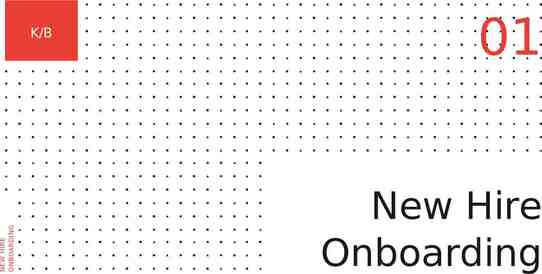Student Activities Centralized Training Session 5 – Design Competition
26 Slides1.70 MB

Student Activities Centralized Training Session 5 - Design Competition

Design Competition Overview Purpose: promote HVAC&R and ASHRAE to students Participation: undergraduate* students enrolled at universities, technology, and architectural schools; within and outside ASHRAE Student Branches Timeline: competition details and registration released in January; submissions due Spring of the following year (approximately an 18 month duration) Example: 2019 competitions released January 2018, submissions due Spring 2019 * Graduate students are allowed to participate in the ISBD

Design Competition Overview There are four separate competitions: 1. 2. 3. 4. HVAC Design Calculations HVAC System Selection Integrated Sustainable Building Design (ISBD) Setty Family Foundation Applied Engineering Challenge (AEC)

Design Competition Overview There are four separate competitions: 1. 2. 3. 4. HVAC Design Calculations HVAC System Selection Integrated Sustainable Building Design (ISBD) Setty Family Foundation Applied Engineering Challenge (AEC)

Project Basis 2019 Competition: small four-story hospital located in Budapest, Hungary

HVAC Design Calculations Intended for: Schools with a limited exposure to HVAC Technology schools with limited engineering Students must: Complete heat gain/heat loss calculations Follow ASHRAE Standards 55, 62.1 and 90.1 Design a complete HVAC system (given) Illustrate the design process (the how factor)

HVAC System Selection Intended for: Schools with a deeper exposure to HVAC Students must: Complete a full life cycle analysis of the building to determine the best HVAC System Selection Follow ASHRAE Standard 189.1 Persuade the reader (creativity) Illustrate why and how to support “HVAC System of Choice”

Integrated Sustainable Building Design Intended for: Schools with a deep exposure to integrated building design and high performance buildings Students must: Redesign the building to illustrate an energy efficient sustainable design that approaches “zero energy” Follow LEED and ASHRAE Standard 189.1 Teams should illustrate integrated design process (architects, engineers and others working as one)

Documents Provided Documentation is online: Owner’s Project Requirements Utility and Service Life Overview Weather Data Completion Drawings Judging Criteria

Competition Judging Chapter Level: If multiple entries originate from the same chapter, the chapter will send the best forward Chapter may nominate a Rising Star Regional Level: Regional Vice Chairs (RVCs) select the best from the region Region may nominate a Rising Star Society Level: All remaining entries are judged and scored Winning teams notified in August

Design Competition Awards Awards: First Place - 2000 prize, representative from the team will receive free transportation, two nights lodging and 100 expenses to attend the 2020 ASHRAE Winter Meeting and receive the award at the Plenary Session Second Place - representative from the team will receive free transportation and two nights lodging to attend the 2020 ASHRAE Winter Meeting and receive the award at the Student Program Third Place - representative from the team will receive free transportation and two nights lodging to attend the 2020 ASHRAE Winter Meeting and receive the award at the Student Program Rising Star - representative from the team will receive free transportation and two nights lodging to attend the 2020 ASHRAE Winter Meeting and receive the award at the Student Program

Design Competition Overview There are four separate competitions: 1. 2. 3. 4. HVAC Design Calculations HVAC System Selection Integrated Sustainable Building Design (ISBD) Setty Family Foundation Applied Engineering Challenge (AEC)

Applied Engineering Challenge Intended for: Student groups seeking engineering solutions to comfort cooling or water challenges in local or regional communities Students must: Analyze the given problem which could involve: – Energy, environmental issues, renewable energy, etc. Use detailed engineering to illustrate how the problem can be uniquely solved

Documents Provided AEC documentation is online: Scope Constraints Submission Judging

AEC Awards Awards: First Place - 5,000 prize plus the entire team will receive free transportation and two nights’ lodging (capped at 5,000) to attend the 2020 ASHRAE Winter Meeting to be held in Orlando where the award will be presented at the ASHRAE Plenary Second Place - One representative from the team will receive free transportation, two nights' lodging at the 2020 ASHRAE Winter Meeting to be held in Orlando where the award will be presented at the ASHRAE Student Program Third Place - One representative from the team will receive free transportation, two nights’ lodging at the 2020 ASHRAE Winter Meeting to be held in Orlando where the award will be presented at the ASHRAE Student Program Rising Star - One representative from the team will receive free transportation and two nights lodging for attendance at the 2020 ASHRAE Winter Meeting to be held in Orlando where the award will be presented at the ASHRAE Student Program

AEC Judging Society Level All entries are judged by the Design Competition Subcommittee of the Student Activities Committee Winning teams notified in August

Winning Teams Winning teams are recognized by ASHRAE at the Winter Program Students are given plaques

Recognition

Resources ASHRAE Website Files, Q&A, etc. ASHRAE Publications Handbooks Design Guides ASHRAE Journal ASHRAE Standards Chapter Chapter members

The Process Teams need to register with ASHRAE Due Dates: Teams must submit in first week of May Local chapters must judge first level by mid-May Region judging is done by SAC RVC – completed by June 1 Society judging is done at annual meeting in June Winning teams are notified the first week of August

Tips for success Pay attention to timeline and the process Teams and advisors should be involved with local members for added value Pay attention to “FAQs” within the Student Zone Review previous winning submissions! Carefully review the “Judging Criteria” Don’t assume – have students illustrate their thoughts!

FAQs Question: Can teams register for more than one competition? Answer: yes

FAQs Question: Can students from multiple colleges work together? Answer: yes

FAQs Question: Can universities/schools have multiple teams? Answer: yes

FAQs Question: Team sizes Answer: some restrictions based upon competition: Design Calculations – at least 2 students System Selection – at least 2 students ISBD – at least 3 students, graduate-level permitted AEC – between 1 and 6 students

FAQs Question: Can we get building drawings in other formats, such as Revit? Answer: no





